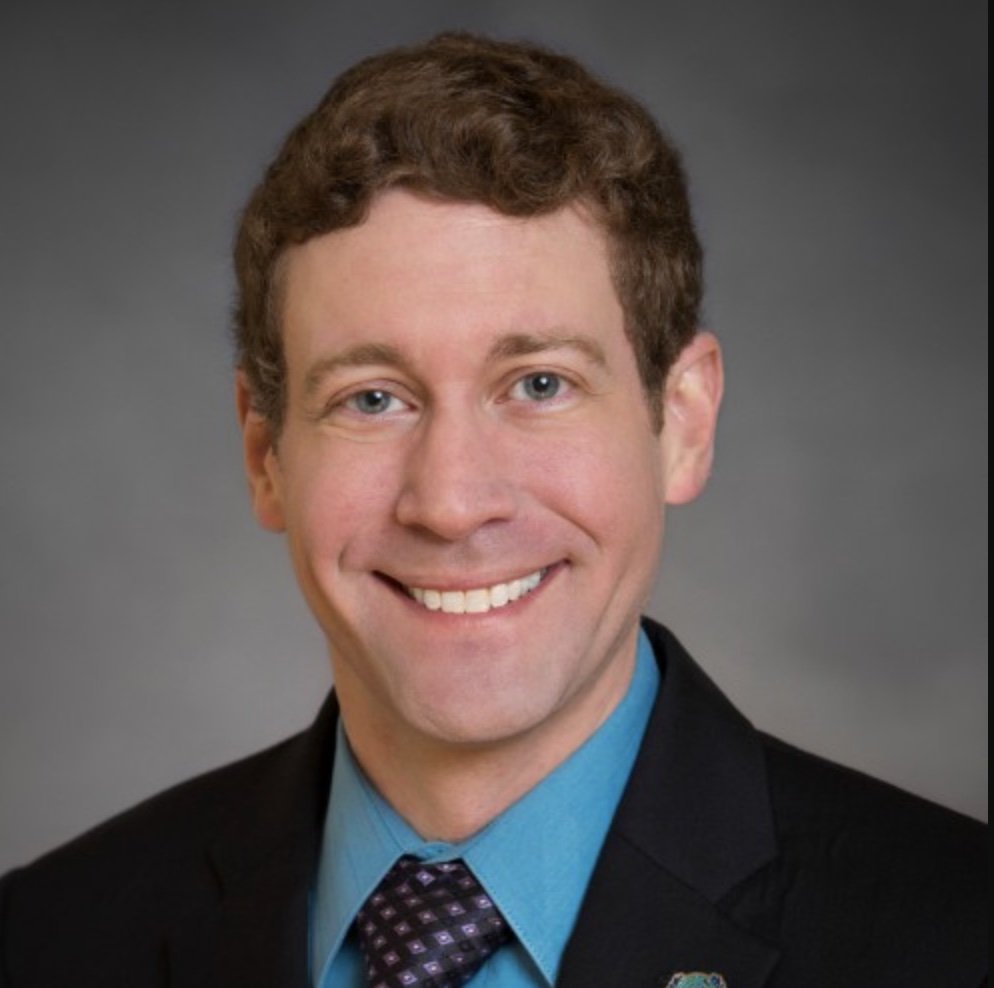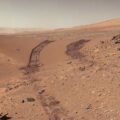In the vast majority of space-based science fiction, ships that can travel faster than the speed of light are pretty much a given. Most credit Gene Rodenberry for creating the first warp drive spacecraft for his 1967 premiere of the TV show Star Trek, but before too long, other space dramas like 1977’s Star Wars were using their own “hyperdrives” to power ships like the Millennium Falcon from planet to planet in a matter of hours, or even minutes.
Still, these technological terrors were more deus ex machina than actual hard science concepts, used by their creators to move the story seamlessly from planet to planet or star system to star system.
That all changed in 1994 when Mexican mathematician Miguel Alcubierre laid out the mathematical foundation for a real-world warp drive spacecraft. Critics immediately pointed out the shortcomings of Alcubierre’s work, primarily the mammoth amounts of energy required to power his spaceship as well as the so-called, purely theoretical “exotic” matter required to build the thing. Nonetheless, his mathematics were sound, moving at least the idea of a warp-capable spaceship from science fiction closer to science fact.
Since Alcubierre’s breakthrough, a number of physicists and engineers have laid out their own formulas for theoretical warp drives, with each design seemingly inching the concept closer and closer to reality. The Debrief has covered many of these concepts, including a 2013 refinement of Alcubierre’s model by former NASA engineer and warp pioneer Harold G. “Sonny” White which dramatically lowered the power requirements from a completely unfathomable amount to a slightly less impossible yet still unattainable (by present-day engineering standards) amount.
More recently, The Debrief spoke to Dr. Eric Lentz, a Ph.D. physicist who offered his own take on the warp drive, as well as a pair of engineers headquartered in Sweden who put forth designs for a warp drive that requires no exotic matter. We also interviewed a Chicago area engineer who has applied for a patent on his unique approach to building a warp drive, along with a professor who envisions traveling faster than the speed of light using something called fluidic space.
Then, in December of 2021, The Debrief broke the news that Dr. White and his Eagleworks team discovered what they claimed to be the first real-world warp bubble while experimenting with extremely small structures known as Casimir cavities.
White’s views about the feasibility of warp drive spacecraft and their related effects have garnered a fair amount of attention from critics over the years. Among them is astrophysicist Ethan Siegel who has noted that the warp drive concept “remains an interesting possibility and one worthy of continued scientific investigation, but one that you should remain tremendously skeptical about given the current state of affairs.”
Faster-than-light travel theories are very much a dark art, but for those new to this subject (or who have never watched an episode of any Star Trek series), a warp bubble is an area of localized space/time that surrounds a faster-than-light ship, allowing it to seemingly break the laws of physics without, you know, breaking the laws of physics. This significant step seemed to mark a potentially dramatic shift from theory to practice, potentially offering future engineers and inventors a roadmap to try to actually construct a working, real-world war drive.
Enter Greg Hodgin, Ph.D., a chemical engineer and political scientist who has started his own company, ZC Inc., with the primary goal of building a warp-capable spaceship within his lifetime.
Dr. Hodgin recently sat down with The Debrief to discuss his lofty goals and the evolving roadmap he has laid out to achieve them. And unlike the handful of theorists who have preceded him in this nascent field, Hodgin believes he has the right people and the right plan to make warp drive spacecraft a physical reality.


The Inspiration
In many of the emails between Hodgin and The Debrief leading up to that interview, the nascent warp pioneer repeatedly pointed out how the wide range of Star Trek series and movies have inspired him to try and build the thing.
“I want to be the first person to fly the Phoenix,” he explained, referencing the first human-made spaceship to break the warp barrier in Star Trek lore.
Hodgin even challenged The Debrief to guess the inspiration for the name of his company. And yes, we ultimately figured out he meant Zefram Cochran, the fictional inventor of the warp drive whose first flight of The Phoenix drew the attention of some Vulcans who happened to be in the neighborhood, kicking off humanity’s membership in the collection of spacefaring species known as The Federation.
But unlike the millions of folks who have dreamt of exploring strange new worlds to seek out new life and new civilizations, Hodgin decided to put his reputation on the line and start a company whose primary goal is to actually do it.
“I’d love our maiden flight of a full-sized warp craft to take place, oh, somewhere around April 5th, 2063,” Hodgin told The Debrief, referencing the date of Cochran’s fictional first flight. “Although, I doubt we’ll be able to do it from Bozeman, Montana (where Cochran’s flight took place).”
The People
Like many entrepreneurs who venture into highly-speculative, high-tech endeavors, Hodgin admits he isn’t an expert in warp fields or the physics behind them and has spent the last couple of years researching quantum physics, general relativity, and warp field mechanics.
“I know just enough to be dangerous,” he joked before rattling off the basics behind his warp drive concept.
First, he began reaching out to folks like Dr. Lentz or the duo in Sweden, learning the ins and outs of their warp concepts and what it would take to build them. He also connected with fusion energy experts, whose power source he believes can propel his first generations of warp drive spacecraft.
“We can’t create enough anti-matter in the lab to realistically drive our warp engine,” he conceded, “but we believe that fusion is close enough and powerful enough to do the job (at least) for our initial goals.”
Next, Hodgin partnered up with a retired Army colonel, Emmett Spurlock, whose area of expertise is operations and logistics. Hodgin says he feels that his own experience in creating and running a UN-recognized non-profit and Spurlock’s 30+ years of experience in operating complex projects dovetails nicely with the theoretical physicists and engineers whose ideas he hopes to test end evaluate until he finds the one that can work.
“Because these theoretical physicists have been pioneers in doing the math, now we know it’s possible,” Hodgin told The Debrief.
Of course, the wide-eyed, sometimes manic CEO often pointed out that there is a very small community of warp theorists and engineers for him to pick from, and if he hopes to engage them on a long-term basis on his project, he will need to do everything to keep them happy.
“There’s only like 40 people doing warp research in the world,” he says. “And if I don’t treat them well, they’re going to go somewhere else.”
The Energy
“A lot of people, when we talk about warp drive, and even when you look at the papers, you see yes, it’s theoretical, and yes, we’ve lowered the energy requirements,” Hodgin told The Debrief, “but to build this thing you’re gonna need a ton of energy and a ton of power.”
That, says Hodgin, is where fusion energy comes in.
“We recently signed an MOU with Jason Cassibry, who you interviewed last year,” he said.
An associate professor in the University of Huntsville’s Department of Mechanical and Aerospace Engineering, Cassibry spoke with The Debrief last year about his work in Pulsed Fusion. Coincidently, Cassibry’s endeavor into fusion research covered by The Debrief was funded by the Limitless Space Institute, a group that includes Dr. Sonny White as a board member.
The Debrief reached out to Cassibry to ask him about ZC and their goals to use fusion energy to power their warp drive spacecraft.
“Broadly speaking, what Greg is trying to do is assemble a cadre of scientists to work out the challenges of warp bubbles for propulsion, power, and other industrial applications,” Cassibry explained. “Since the world is chasing abundant sources of energy, Greg conjectured that warp-enabled fusion could be an ultimate route to inexhaustible energy.”
In simple terms, nuclear fusion generates a lot of heat and radiation, most of which gets lost and wasted because it doesn’t become usable energy. By using a distortion in spacetime, such as a small warp bubble, gravity itself will keep that heat and radiation contained, much like it does with the Sun’s energy.
“We also know that we can create gravity-like fields to interact with matter in a variety of ways using current, voltage, frequency, and material properties. It has been speculated since the 1800’s that both gravity and electromagnetism create, or are emergent properties, of spacetime curvature, Cassibry said. “The generation of curvature by electromagnetic fields in an efficient way has not been formalized in a general way that is accepted by the mainstream. We also have not generated a significant thrusting force or motion from pure fields yet. Greg sees the application of fusion as a strong motivator for paying for some of the critical research that needs to be done to figure these problems out.”
Hodgin freely admits that fusion energy may still be years or even decades away, but for the purposes of his company ZC, he is hoping it can become a reality in the next five years. In fact, he thinks he can take the core concepts in warp theory and apply them to fusion, greatly reducing the power requirements needed to create the initial fusion reaction.
“The idea would be, with several warp fields, you can basically take a confined space and just crunch it to pieces,” he explains. Hodgin says this is the idea that most attracted Cassibry and the one that his team will have to conquer first before they can make their first warp drive spacecraft.
The First Warp Drive spaceCraft
Once they have perfected fusion energy (because no ‘crazy’ theory would be complete without a seemingly impossible first step), Hodgin says his team will be able to build the first warp-capable ship. But unlike the Enterprise or even the Phoenix, ZC’s first warp-capable craft will be incredibly tiny.
“We’re actually looking to create a warp bubble within the next five years,” Hodgin told The Debrief. “And again, microscopic. We’re talking nanometer, angstrom level. The whole point is to show we can actually distort space/time.”
Size is the key, says Hodgin, because of the tremendous amount of power required to warp space/time.
“By shrinking the warp ship from 100m (large enough to carry human crew) to the nano-scale, you can dramatically reduce the energy requirements,” he explained.
After talking with the various warp field theorists and engineers, Hodgin says his extremely tiny warp craft will also feature some significant advantages over previous theoretical designs. For example, his warp field will not be constant but pulsed on and off. This allows for more control and also allows for ongoing communication between the ship and the engineers.
“One of the problems with Alcubierre is once you turn it on, you can’t turn it off,” he explained. “Ours mitigates that problem.”
Hodgin also says that his first nano-scale craft (and their first macro-scale craft planned for somewhere around year 10 of his business plan) will use a warp drive for propulsion but will not be designed to go faster than light. This, he says, removes the need for exotic matter, allowing his engineers to work with materials already available.
“Creating the microscopic warp bubble allows us to get the power to perfect that technology, and then we can go bigger,” he told The Debrief.
Hodgin also notes that even a sub-light warp ship would be a huge advantage over current propulsion technology.
“At .33 C (one-third the speed of light), we can get to orbit in 8 seconds,” Hodgin says as his voice gets higher and his eyes open wide. “We can get to Mars in 8 minutes!”
The Next Steps
Like many projects of a speculative nature, Hodgin says that ZC will need to secure some first-stage funding to get their project out of the planning stages and into implementation.
“Our goal right now is to be chasing government grants,” he said.
Toward that end, Hodgin and professor Cassibry have partnered on a grant application to the National Science Foundation that could help propel their fusion research component forward. He is also speaking to venture capitalists that seem to see the value in his fusion energy first approach.
“You tell these guys you want to build a warp drive they look at you like your crazy,” he explains. “But you tell them you are working on nuclear fusion, suddenly their eyes open up, and they start to see dollar signs.”
When The Debrief noted the speculative nature of his endeavor, Hodgin just smiled again before pointing out how he and his COO have the hands-on experience with politics and operations that few, if any, of the warp theorists whose work he hopes to build upon possess.
“A lot of scientists (chasing VC money) make the same mistake,” he said. “The idea is good. If you just see the idea, it is fine. But that’s not all that you need. There are political and social, cultural, ethical, and moral issues that come with that. And if you don’t think about the whole box, they’ll talk to you, but they’re not going to give you (money).”
In fact, he says, his recent appearance at The New Worlds Conference in October (where he was able to touch base with Dr. White, who was also on his panel) resulted in some pretty interesting connections, offering him hope.
“We had several people come up and talk to us (at the new worlds conference), including Space Force,” he told The Debrief. “That was fascinating. And not in a bad way. It seems that a lot of people think this is less crazy than it was a year or two ago. That’s a very good place to be.”
Hodgin readily admits his venture is definitely out there and that he and his team won’t really know if it can work or not until they get into the lab and try to build it, but he argues that is typical of big pharma and biotech investments that are often years away before tangible success.
“We don’t know if it’s going to work at all,” he said. “It might be beyond our technological capacity. It might be”
Furthermore, he also notes that even if they are successful in turning their warp ship on, there may be some unforeseen consequences they need to prepare for.
“Let’s make damn sure that when we turn this thing on, we don’t open a hole to another dimension,” he said only half-jokingly.
Hodgin also admits he hasn’t chosen one specific warp theory to pursue. Instead, he is hoping to undertake what he calls a “wheel and spoke” model where multiple warp teams are working on all of the different theories at the same time until one of them finds the magic bullet to make the whole concept work.
All in all, the ZC venture is a fun idea, and Hodgin is, without a doubt, the first mover in the field of building an actual warp spacecraft. Fortunately, the starry-eyed dreamer says, the theoretical work has more or less been accomplished, and it is now his job to take those theories (and the people behind them) and make a warp-capable spacecraft a reality.
“Guys like Alcubierre, White, Lentz, and others have done the physics for us,” he explains with a sly grin. “And there’s enough of a loophole here that we can drive a starship through it.”
Follow and Connect with Authors MJ Banias and Christopher Plain on Twitter: @mjbanias and @plain_fiction.

